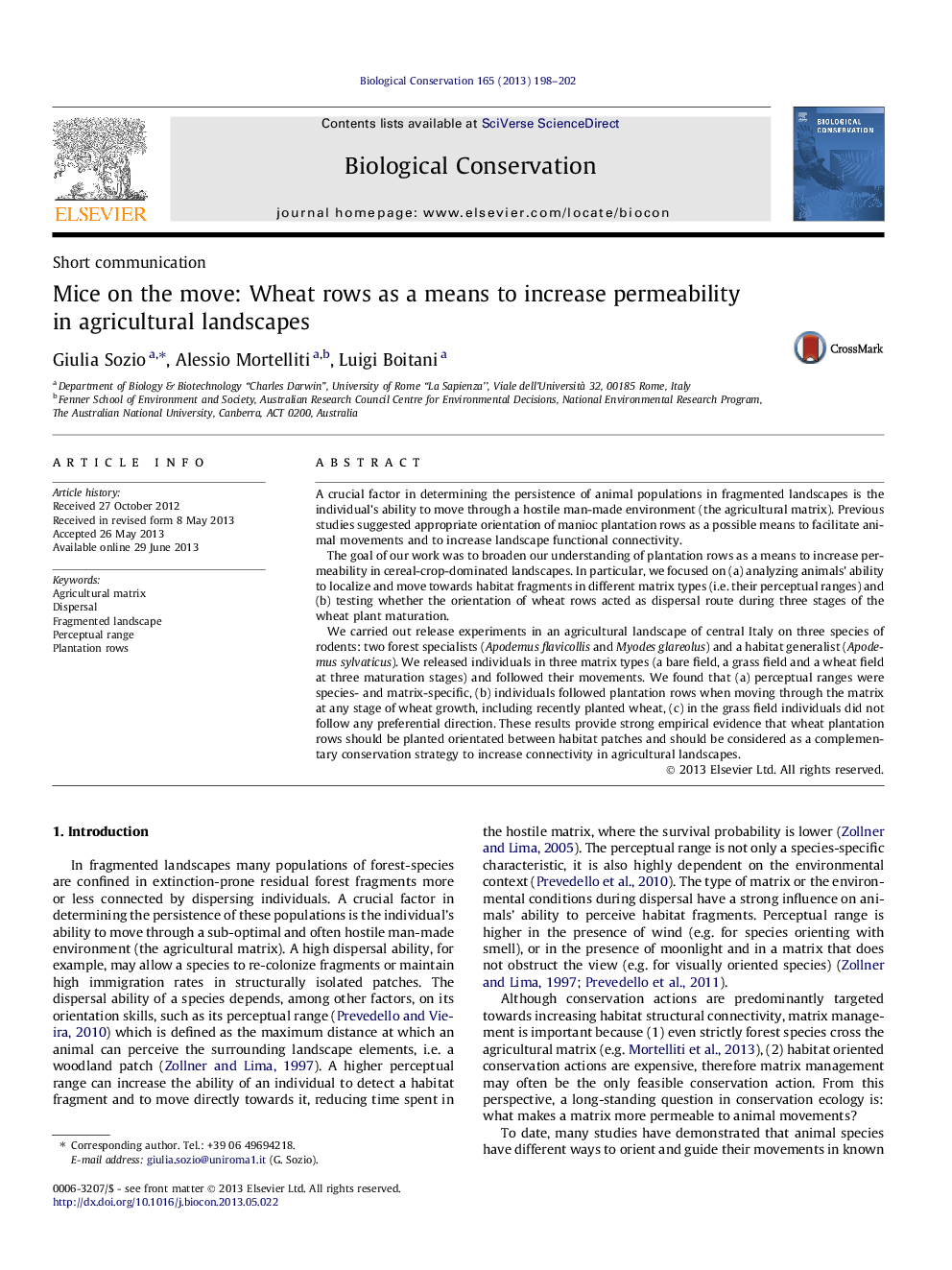| Article ID | Journal | Published Year | Pages | File Type |
|---|---|---|---|---|
| 6300882 | Biological Conservation | 2013 | 5 Pages |
Abstract
We carried out release experiments in an agricultural landscape of central Italy on three species of rodents: two forest specialists (Apodemus flavicollis and Myodes glareolus) and a habitat generalist (Apodemus sylvaticus). We released individuals in three matrix types (a bare field, a grass field and a wheat field at three maturation stages) and followed their movements. We found that (a) perceptual ranges were species- and matrix-specific, (b) individuals followed plantation rows when moving through the matrix at any stage of wheat growth, including recently planted wheat, (c) in the grass field individuals did not follow any preferential direction. These results provide strong empirical evidence that wheat plantation rows should be planted orientated between habitat patches and should be considered as a complementary conservation strategy to increase connectivity in agricultural landscapes.
Related Topics
Life Sciences
Agricultural and Biological Sciences
Ecology, Evolution, Behavior and Systematics
Authors
Giulia Sozio, Alessio Mortelliti, Luigi Boitani,
